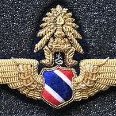Missing Malaysia Airlines jet carrying 239 triggers Southeast Asia search
-
Recently Browsing 0 members
- No registered users viewing this page.
-
Topics
-
-
Popular Contributors
-
-
Latest posts...
-
31
CNN-Friend says alleged Minnesota lawmakers' shooter is Trump supporter, abortion rights foe
https://scontent-mia3-2.xx.fbcdn.net/v/t39.30808-6/506444890_1116224353863370_4783093375865014592_n.jpg?_nc_cat=105&ccb=1-7&_nc_sid=833d8c&_nc_ohc=wQo0VnNJg-8Q7kNvwFD2ouS&_nc_oc=Adm0tAp4PL8WJ07wT6d2StDSbnr31BEZvXkpBNVbL_eFiSYwZfFDKTMbZ4bYtIphL9U&_nc_zt=23&_nc_ht=scontent-mia3-2.xx&_nc_gid=JPwEpavW0Xl5l3-merWMgg&oh=00_AfO5QySUEw54DWNcI9c6C4LOTMaaOV1DUQDctcL8UDkRmA&oe=6854A55E -
3
Beach Road Sunset: Five Skint Indian Blokes, One Bird, and Zero Filthy Shame
You don't see 4-5 Brits bartering for the same girl trying to get a freebie only the Indians behave like this. -
-
0
Financial requirement 500K THB for one-year extension of non-O visa
Hello, My wife has applied for a non-O based on living with non-Thai family members. My son will study at an international school in Thailand. We've been told that she will have to show 500K bahts on her Thai bank account to apply for a one-year extension - which was no surprise to me, I knew about it. She had planned to bring cash and deposit it in the bank. My issue: I've read hints here and there that one is supposed to prove that the money comes from abroad. Is it the case in our situation? Do we need to wire the money to her bank account or is there a way around it? Thanks for your help! -
-
6
'Very telling': Trump agency under fire after posting Russian flag on Flag Day
He really is his b****.
-
-
Popular in The Pub



.thumb.jpg.3ee24d9400fb02605ea21bc13b1bf901.jpg)



.thumb.jpeg.d2d19a66404642fd9ff62d6262fd153e.jpeg)





Recommended Posts